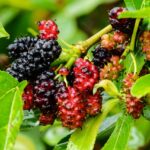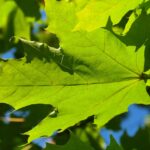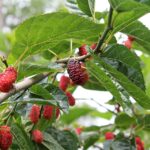How to Grow a Golden Honey Locust Tree in Your Yard
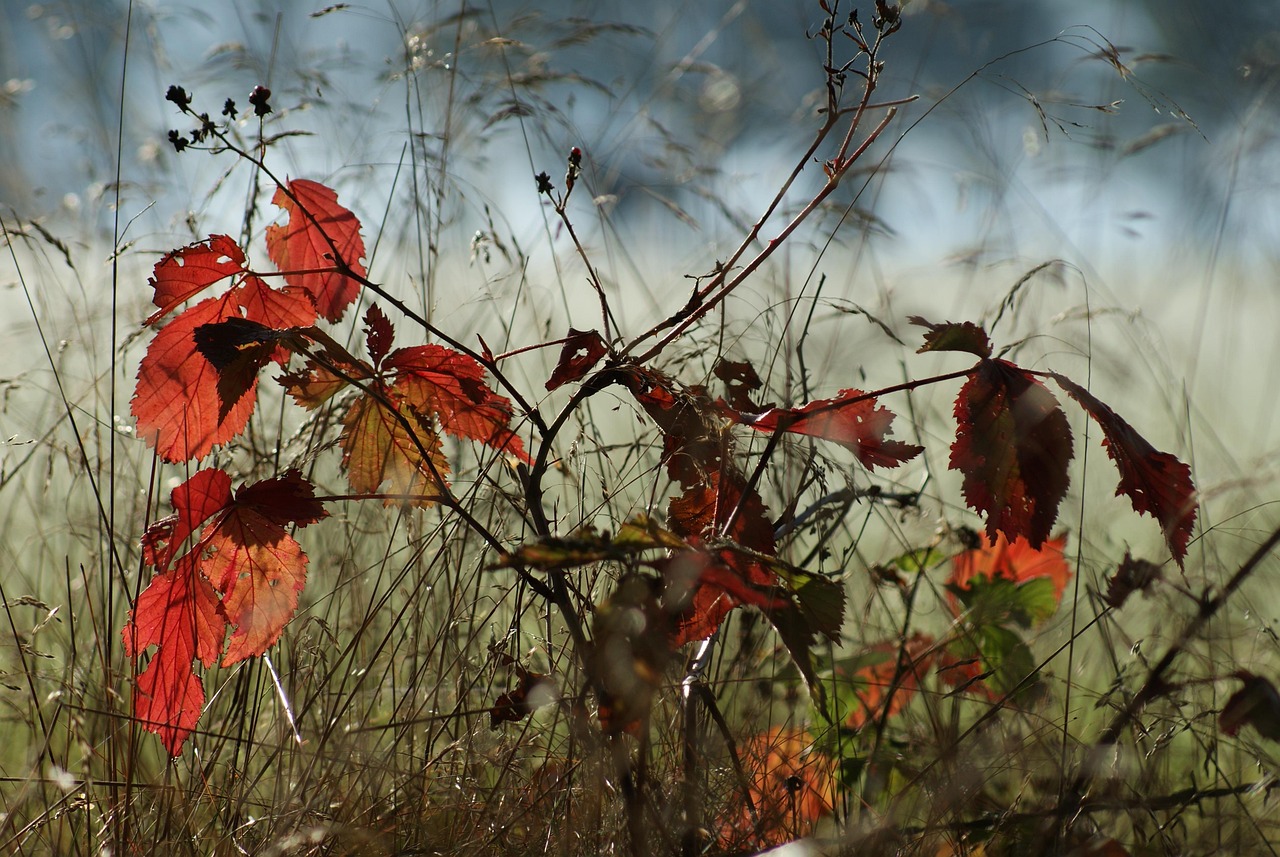
I’ve always admired the look of the golden honey locust tree, with its delicate foliage and open canopy that still provides a good amount of shade. It seems like a tree that could brighten up a yard. I’ve been doing some research on how to grow one myself, and I wanted to share what I’ve learned about getting started with this lovely tree.
Key Takeaways
- The golden honey locust tree offers a beautiful, open shade and bright foliage, making it a popular choice for landscapes.
- This tree thrives in full sun and prefers well-draining soil, though it shows tolerance for various soil types, including sandy or clay loams.
- When planting, select a site with good sun exposure and prepare a hole twice the width of the root ball, planting it slightly above soil level.
- Newly planted trees need consistent watering for the first year, while established trees are quite drought-tolerant.
- While generally low-maintenance, regular pruning can help maintain structure, and being aware of potential pests like webworm is helpful.
Why Choose a Golden Honey Locust Tree
When I first started thinking about adding a new tree to my yard, I wanted something that was both beautiful and practical. I stumbled upon the Golden Honey Locust, and honestly, it ticked all the boxes for me. This tree offers a fantastic combination of aesthetic appeal and genuine usefulness, making it a standout choice for many homeowners.
One of the first things that caught my eye was its unique foliage. The leaves are delicate and feathery, creating a lovely, airy look that’s quite different from other shade trees. In the spring, the new growth on many golden varieties has a bright, almost chartreuse color that brightens up the landscape. As the season progresses, the leaves mature to a pleasant green, but they still maintain that fine texture. It’s this delicate appearance that allows sunlight to filter through, creating a dappled shade effect underneath. This means you can still grow grass or other plants in the area without them being completely overwhelmed by darkness, which is a big plus in my book.
Beyond just looking good, the Honey Locust is surprisingly adaptable. It’s known to tolerate a range of soil conditions and is tough when it comes to urban environments. I read that they can even handle some pollution, which is good to know if you live near a busy road. Plus, they don’t have those massive, messy leaves that clog gutters or require endless raking in the fall. The small leaflets tend to just break down and disappear into the lawn, which is a huge time-saver.
Here are a few key benefits I found
- Dappled Shade: Provides shade without completely blocking sunlight, allowing other plants to thrive underneath.
- Aesthetic Appeal: Delicate, fern-like leaves and an open branching structure create a graceful appearance.
- Adaptability: Tolerates various soil types and urban conditions, making it a resilient choice.
- Low Maintenance: Small leaves mean less cleanup, and many modern cultivars are thornless and seedless.
I also learned that the Honey Locust has nitrogen-fixing properties. This means it actually helps improve the soil it grows in, adding nutrients that can benefit nearby plants. It’s like having a tree that works for your whole garden ecosystem.
If you’re looking for a tree that’s not only a beautiful addition to your property but also offers practical advantages and is relatively easy to care for, the Golden Honey Locust is definitely worth considering. It’s a tree that provides beauty and function, and I’m looking forward to seeing mine mature. You can find more information on tree benefits that might help you decide.
Ideal Sunlight and Soil Conditions for Optimal Growth
When I’m thinking about where to plant my Golden Honey Locust, I always consider the light and soil conditions first. It’s important to get this right for the tree to do its best.
These trees absolutely thrive in full sun. That means they need at least six hours of direct sunlight every single day. While they can put up with a bit of shade, maybe four to six hours, you’ll notice they don’t grow as vigorously or look as full. I’ve seen them in shadier spots, and the lower branches tend to die off because they just aren’t getting enough light to make food. So, pick a sunny location.
As for soil, I’ve found that Golden Honey Locusts are forgiving, which is great. They aren’t picky about texture and can handle a range of soils, from sandy to clay. The ideal situation is a nice loamy soil, but they’ll adapt. What’s more important than the type of soil is how well it drains. Soggy roots are a no-go for most trees, and this one is no exception. Even though they can handle dry spells once established, they prefer soil that doesn’t stay waterlogged.
I’ve learned that good drainage is key. If the soil holds too much water, the roots can rot, and that’s a problem that’s hard to fix later on.
Here’s a quick rundown of what they generally prefer
- Sunlight: Full sun (6+ hours daily).
- Soil Texture: Loamy, sandy, or clay (as long as it drains well).
- Soil pH: They’re quite tolerant, doing well in acidic, neutral, or alkaline conditions, but they hit their stride when the pH is between 6.0 and 8.0.
- Moisture: They can handle both dry and moist conditions, but growth is best in soil that stays consistently moist but well-drained.
I also read that they’re tough and can handle some urban conditions, like salt spray, which is a bonus if you live near a busy road. It’s good to know they’re not too fussy, but giving them the best start with plenty of sun and decent soil will pay off in the long run. It’s like giving them a good foundation, similar to how Silver Maple trees need the right conditions to grow quickly.
Understanding Soil Preferences
When I’m thinking about where to plant my Golden Honey Locust, the soil is definitely a big consideration. These trees are adaptable, which is great, but they do have some preferences to help them thrive. They do best in soils that drain well. That’s probably the most important thing to remember.
So, what kind of soil textures does it like? I’ve found they’re happy in a range of things, from sandy loam to silt, and even clay loam, as long as that clay loam isn’t holding onto too much water. If the soil is heavy clay or rocky, or if the soil layer is just too thin, I’d probably look for a different spot. It seems like they don’t do well in those conditions.
When it comes to the soil’s pH, Honey Locusts are quite forgiving. They can handle acidic, neutral, or alkaline conditions. However, for the best growth, aiming for a pH between 6.0 and 8.0 is ideal. I also read that they can tolerate salty soils well, which is good to know if I live near a road that gets salted in the winter.
Here’s a quick rundown of what I look for
- Drainage: Absolutely key. No soggy roots.
- Texture: Loamy, sandy, or silt soils are great. Clay loam is okay if it drains.
- pH: Anywhere from 6.0 to 8.0 is perfect, but they tolerate a wider range.
- Depth: Make sure there’s a decent layer of soil for the roots to spread.
I’ve noticed that these trees have a adaptable root system. If the soil is a bit tougher, like clay, their roots might grow deeper and spread wider to find what they need. It’s neat how they adjust to different environments. This adaptability is why you can often find them growing in various places, and it’s a big reason why I’m considering them for my yard. It means I don’t have to stress too much about getting the soil absolutely perfect, as long as I avoid the real extremes. You can find more information on tree soil needs if you want to get technical.
Overall, as long as I ensure good drainage and avoid poor soil conditions, my Golden Honey Locust should be quite happy. It’s good to know they aren’t overly fussy, making them a solid choice for many yards.
Selecting the Right Cultivar
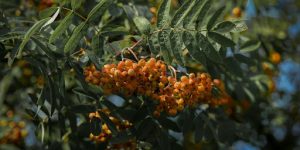
When I started looking into growing a Golden Honey Locust, I quickly realized there are quite a few options out there. It’s not just a matter of picking any tree labeled ‘Honey Locust.’ The native species, while tough, comes with a significant drawback: thorns. And those seed pods can make a real mess in the yard, which is something I definitely want to avoid. Thankfully, plant breeders have developed cultivars that address these issues.
The most sought-after varieties for home landscapes are the thornless and often podless types. These are usually derived from Gleditsia triacanthos var. inermis. When you’re choosing, keep an eye out for specific cultivar names, as they can vary in size, shape, and even foliage color. Some popular thornless options include
- ‘Sunburst’: This is a common choice, known for its bright yellow-green new foliage that matures to a lighter green. It typically grows to about 30-40 feet tall and wide, with a nice pyramidal shape. It’s generally podless.
- ‘Shademaster’: Another widely available cultivar, this one has deep green leaves and grows a bit larger, often reaching 40 feet or more. It might produce some seed pods, so it’s worth checking if that’s a concern for you.
- ‘Moraine’: This cultivar is noted for its more rounded crown and grows to about 40 feet. It’s also seedless and known for good pest resistance.
- ‘Northern Acclaim’: If you’re in a colder climate, this one is a good bet, being hardy to USDA Zone 3. It usually stays in the 35-50 foot range.
It’s important to remember that even thornless varieties can sometimes produce a few stray thorns, especially when young or if the tree is stressed. It’s usually not a major issue, but something to be aware of.
When I compare these, I’m looking for a tree that fits my yard’s size and my aesthetic preferences. The ‘Sunburst’ caught my eye with its color, but I also appreciate the hardiness of ‘Northern Acclaim’ for my region. It’s a good idea to check the mature size and growth habit to make sure it will fit well in your intended spot.
Planting Timing
Deciding on the best time to plant your Golden Honey Locust is important for giving it a good start. Generally, I’ve found that both spring and fall work well, but each has its own little advantages.
Spring planting is often favored because it gives the tree a whole growing season to establish its roots before winter hits. You’ll want to get it in the ground after the last frost but before the real heat of summer kicks in. This timing allows the soil to warm up, which is great for root development.
Fall planting is also a solid choice. The cooler temperatures and increased rainfall in autumn help reduce transplant shock. Plus, the tree can start focusing its energy on root growth underground while the top growth is dormant. Aim to plant at least a month before the ground freezes solid. This gives the roots a chance to settle in.
Here’s a quick rundown of what to consider
- Spring: Plant after the danger of frost has passed, but before the summer heat. This gives the tree a full season to establish.
- Fall: Plant when temperatures are cooler and there’s more moisture, ideally a month before the ground freezes.
I remember one year I planted a tree a bit too late in the fall, and it struggled to get going the next spring. It’s better to be safe than sorry when it comes to giving your new tree the best chance. Getting the timing right is a big part of ensuring your Golden Honey Locust thrives for years to come. You can find more details on planting techniques at Arbor Valley Nursery.
Step-by-Step Planting Guide
Alright, so you’ve got your Golden Honey Locust, and it’s time to get it in the ground. Don’t overthink this part; it’s straightforward. First things first, dig a hole. You want it to be about twice as wide as the root ball and just as deep. This gives those roots plenty of room to spread out without having to push through compacted soil. I usually just eyeball it, but if you want to be precise, grab a tape measure.
Once the hole is ready, gently take the tree out of its container. If the roots are tightly wound, give them a little loosen up. Place the tree in the center of the hole, making sure the top of the root ball is level with the surrounding ground. It’s important that you don’t plant it too deep; that’s a common mistake.
Now, backfill the hole with the soil you dug out. Don’t add a bunch of amendments unless your soil is truly terrible. Honey locusts are tough and can handle a variety of soils. As you fill, lightly tamp the soil down to get rid of big air pockets. You don’t want to stomp on it, though, just firm it up a bit.
After it’s planted, give it a good watering. This helps settle the soil around the roots. Then comes the mulch. I like to put down a 2- to 4-inch layer of wood chips or shredded bark around the base. Keep the mulch a few inches away from the trunk itself – this is super important to prevent rot and keep pests away. Think of it like a little donut of mulch, not a volcano.
Finally, protection. Young trees, especially those with tender bark, can be vulnerable to damage from lawnmowers or even deer. If you’re worried about that, consider putting a tree guard or a small wire cage around the trunk for the first few years. This will save you a lot of headaches down the road. Remember to water it well after planting, and for the first year, keep it consistently moist, especially if there isn’t much rain. A slow trickle of water for about an hour is usually a good start for a new tree watering.
Here’s a quick rundown
- Dig a hole twice as wide and as deep as the root ball.
- Gently place the tree in the hole, ensuring the top of the root ball is level with the ground.
- Backfill with native soil, lightly tamping it down.
- Water thoroughly after planting.
- Apply a 2-4 inch layer of mulch, keeping it away from the trunk.
- Consider trunk protection for young trees.
Planting a tree is an investment in your yard’s future. Taking these simple steps now will help your Golden Honey Locust establish a strong foundation for years of growth and beauty.
Watering Young Golden Honey Locust
When you first bring your young Golden Honey Locust home, getting the watering right is important. It helps the roots get established and gives the tree a good start. Initially, I aim to water deeply about once a week. This might seem like a lot, but it encourages those roots to grow down into the soil, which is what you want for a strong, healthy tree. Of course, this isn’t a hard and fast rule; you’ll need to pay attention to the weather. If it’s been unusually hot and dry, I might need to water a bit more often, maybe every five days or so. Conversely, if we’ve had a good amount of rain, I’ll skip a watering session. The goal is to keep the soil consistently moist, but not waterlogged. Think of it like a wrung-out sponge – damp, but not dripping. I usually use a slow trickle from the hose, letting it soak in for a good hour. This way, the water gets down to where the roots are. After the first year, I start to back off a bit, letting the tree rely more on natural rainfall as it gets bigger and more established. It’s all about building that resilience from the ground up.
Here’s a general guideline I follow for the first year
- First 2-4 weeks after planting: Water thoroughly every 3-5 days, especially if it’s warm.
- Month 1-6: Water deeply once a week.
- Month 6-12: Water deeply every 1-2 weeks, depending on rainfall.
It’s better to water less often but more deeply. This encourages the roots to grow downwards, making the tree more drought-tolerant as it matures. Shallow, frequent watering can lead to a shallow root system, which isn’t ideal.
Fertilizing Techniques
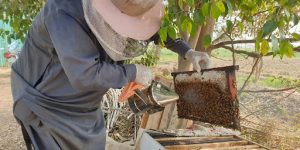
When it comes to feeding your Golden Honey Locust, I’ve found that these trees are low-maintenance. As a native species, they generally don’t need a lot of extra help from us in the fertilizer department. In fact, over-fertilizing can sometimes do more harm than good, potentially leading to weak, leggy growth that’s more susceptible to problems.
My general approach is to only fertilize if I notice signs of nutrient deficiency, like yellowing leaves or stunted growth, especially in younger trees. For established trees, I usually skip fertilizing altogether. If I do decide to give a younger tree a boost, I opt for a slow-release, balanced fertilizer in the early spring. This way, the nutrients are released gradually over time, matching the tree’s growth cycle.
Here’s a quick rundown of what I consider
- When to Fertilize: Primarily for young trees (first 1-3 years) or if deficiency is observed. Early spring is the best time.
- What to Use: A balanced, slow-release granular fertilizer (like a 10-10-10 or similar). Look for one that’s formulated for trees and shrubs.
- How Much: Always follow the product’s instructions. For a young tree, I might apply about 1 pound of fertilizer for every 1 inch of trunk diameter, spread out over the root zone, but never right up against the trunk.
It’s about observing your tree. If it looks healthy, green, and is growing at a reasonable pace, it’s probably getting all the nutrients it needs from the soil. Sometimes, the best feeding strategy is no feeding at all.
I avoid fertilizing in late summer or fall, as this can encourage new growth that won’t have time to harden off before winter, making it vulnerable to frost damage. Stick to spring, and only when necessary, and your Golden Honey Locust should be perfectly happy.
Pruning for Structure & Health
When it comes to keeping your Golden Honey Locust looking its best and growing strong, pruning is a key part of the process. I usually tackle this in late winter or early spring, just before the tree gets going for the season. This timing is good because the sap flow isn’t as heavy then, and you can easily see the tree’s structure without all the leaves. My main goal is to remove anything dead, damaged, or that looks like it’s rubbing against another branch. Branches that cross and chafe can create entry points for diseases, and nobody wants that.
I also keep an eye out for those fast-growing, upright shoots that sometimes pop up along the trunk or main branches – they’re called water sprouts. They don’t contribute to the tree’s overall shape or health, so I snip those off too. It’s all about encouraging a nice, open canopy.
Here’s a quick rundown of what I look for
- Dead or Diseased Branches: These are obvious culprits that need to go.
- Crossing or Rubbing Branches: Removing one of these prevents future damage and potential disease.
- Water Sprouts: These are vigorous, upright shoots that can clutter the canopy.
- Suckers: Shoots growing from the base of the tree should also be removed.
The most important thing is to maintain a good structure, especially when the tree is young. For mature trees, it’s mostly about tidying up and removing any problem branches. I try not to overdo it; the goal is to help the tree, not to force it into an unnatural shape. If I see a branch that’s out of place or looks weak, I’ll cut it back to a point where it meets a stronger branch or the trunk. It’s a bit like giving the tree a haircut to keep it healthy and looking good.
Pruning is more than just trimming; it’s about guiding the tree’s growth and preventing issues before they start. A little attention each year goes a long way in keeping your Golden Honey Locust a beautiful and robust part of your yard.
Common Pests & Diseases and How to Manage Them
While the Golden Honey Locust is generally a tough tree, it’s not entirely immune to problems. I’ve noticed a few things that can pop up, and it’s good to be aware of them so I can deal with them quickly if they appear.
One common issue I’ve seen is the mimosa webworm. These little guys spin webs around the leaves and can make the tree look messy, sometimes even defoliating it if it gets bad. Spider mites are another one, especially when the weather is hot and dry. They’re tiny, but they can also cause the leaves to drop.
Then there are the borers. Some of these can tunnel under the bark, which is definitely not good for the tree’s health. Twig girdlers are also a nuisance, especially on younger trees, as they’ll chew through small branches. Cicadas can also cause damage when they lay their eggs, essentially pruning small branches.
Diseases aren’t as common, but I have heard about cankers. If I see any signs of these, I know to prune out the affected branches right away with clean tools. Root rot is also a possibility, but that’s usually a sign of poor drainage, which I’ve already made sure to avoid by planting in well-draining soil.
Here’s a quick rundown of what I keep an eye out for
- Mimosa Webworm: Look for webbing on leaves.
- Spider Mites: Tiny pests, often seen in dry, hot weather.
- Borers: Check for tunnels under the bark or damaged branches.
- Cankers: Look for sunken or discolored areas on branches.
My approach is usually to keep the tree healthy and unstressed. A strong tree is much better at fending off pests and diseases on its own. If I do spot a problem, I try to address it early, often with organic sprays if needed, or by simply removing affected parts.
It’s also worth noting that deer and rabbits can sometimes nibble on young branches or bark, especially in winter. If I have very young trees, I might consider some protective wrapping until they’re a bit more established.
Mulching and Bark Protection
Keeping the roots of your golden honey locust cool and safe is straightforward once you get the hang of it. I’ve found that a good layer of mulch does wonders. It’s not just about making the base of the tree look tidy, though that’s a nice bonus. Mulch helps the soil hold onto moisture, which is a lifesaver during those dry spells. Plus, it acts like a blanket, keeping the soil temperature more even, so the roots aren’t getting too hot in the summer or too cold in the winter.
When I apply mulch, I usually go for wood chips or shredded bark. I aim for a layer that’s about 2 to 4 inches deep. It’s important not to pile the mulch right up against the trunk of the tree. You want to leave a few inches of space there. This prevents moisture from getting trapped against the bark, which can lead to rot or other issues. Think of it like giving the tree a little breathing room.
Here’s a quick rundown of what I do
- Choose organic mulch like wood chips or shredded bark.
- Spread it evenly around the base of the tree, extending out to the drip line if possible.
- Keep the mulch layer 2-4 inches deep.
- Crucially, maintain a gap of a few inches between the mulch and the tree trunk.
Sometimes, I’ll see people piling mulch way too high, and it just makes me cringe. It’s like they’re trying to suffocate the poor tree.
Protecting the bark is also a consideration, especially for younger trees. While mulch helps, sometimes a physical barrier is needed if you have issues with rabbits or other critters nibbling on the bark during harsh winters. A tree guard or even some sturdy wire mesh can be a good idea in those situations. It’s a bit of extra effort, but it can save your tree from a lot of damage.
For established trees, this maintenance becomes even simpler. You’re mostly just topping up the mulch as it breaks down. It’s a low-effort way to keep the tree healthy and looking good. If you’re looking for good-quality mulch or other tree care supplies, checking out a local nursery like Arbor Valley Nursery can be helpful.
Maintaining Mature Golden Honey Locust
Once your Golden Honey Locust tree is established, its care needs drop off, which is one of the best parts about having one. You’ll find that mature trees are quite forgiving and don’t demand constant attention. Of course, that doesn’t mean you can completely forget about it. I still like to give mine a quick look-over now and then, just to make sure everything’s as it should be.
One of the main things to keep an eye on is pruning. While young trees need more shaping, mature ones mostly just need the occasional trim to keep them looking good and healthy. I usually do this in late winter or early spring, before the new growth gets going. My focus is on removing any branches that are dead, broken, or rubbing against each other. It’s not a big job, but it makes a difference in how the tree holds up over time.
I also pay attention to the base of the tree. Keeping a layer of mulch around it is still a good idea. It helps keep the soil moist, especially during dry spells, and keeps weeds from crowding the roots. I make sure to keep the mulch a few inches away from the trunk itself, though, to prevent any moisture buildup that could cause rot.
It’s about observation at this stage. You’re not actively doing a lot, but you’re making sure the tree is happy and healthy on its own terms. Think of it as a check-in rather than a chore.
Fertilizing isn’t usually necessary for mature trees unless you notice signs of nutrient deficiency, like pale leaves or slow growth. If I do fertilize, I opt for a slow-release, balanced type in the early spring, following the package directions carefully.
I also keep an eye out for any signs of pests or diseases. While these trees are tough, sometimes things like spider mites or leafhoppers can show up. Catching them early is key. Often, a strong spray of water can handle minor infestations, or I might use an organic insecticidal soap if needed. It’s rare, but it’s good to be prepared.
Long-Term Landscape Planning
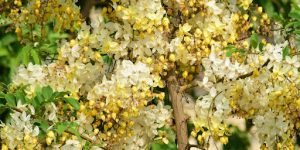
As my Golden Honey Locust matures, I’m thinking about how it fits into the bigger picture of my yard. It’s not just a single tree anymore; it’s part of a living landscape. When I first planted it, I made sure to give it enough space, knowing it would grow into a decent-sized shade tree. For most cultivars, like ‘Shademaster’ or ‘Skyline’, I’d recommend at least 30-40 feet of clearance in all directions. This gives it room to spread its branches without crowding other plants or structures.
I’ve also been considering what to plant around its base. Because the Honey Locust casts a dappled shade, it’s forgiving with companion plants. I’ve seen them paired nicely with shade-tolerant perennials like hostas and ferns, which don’t mind the filtered sunlight. Low-growing shrubs can also work well, as long as they don’t compete too much for water, especially when the tree is still young.
Here are a few ideas I’m playing with
- Groundcovers: Creeping thyme or sedum can add a nice texture without growing too tall.
- Perennials: Astilbe, bleeding hearts, and coral bells do well in partial shade.
- Small Shrubs: Hydrangeas or dwarf varieties of rhododendrons can add color and structure.
It’s also worth remembering that Honey Locusts are nitrogen-fixers, meaning they actually help improve the soil around them. This is a bonus for any plants sharing that space.
Over time, the tree’s root system, while not overly aggressive, does spread. It’s wise to keep this in mind when planning any new garden beds or hardscaping nearby. I’m trying to avoid planting anything too close together that might struggle with root competition later on.
Thinking long-term means considering how the tree will look and function in 10, 20, or even 30 years. My goal is to create a harmonious outdoor space where the tree is a central, beautiful element. It’s a slow process, but seeing it grow and planning its place makes it all the more rewarding.
Thinking about the future of your garden? Proper spacing and choosing the right plants to grow together are key to a healthy, lasting landscape. It’s like setting up your plants for success for years to come! Want to learn more about creating a beautiful and sustainable garden plan? Visit our website for expert tips and advice.
Frequently Asked Questions
Why is the Golden Honey Locust a good choice for my yard?
I find that the Golden Honey Locust is a wonderful tree for many yards because it doesn’t create overly dense shade. This means grass can still grow underneath its branches, making it ideal for lawns or areas where you want some light to filter through. It’s also quite tough and can handle city conditions like pollution and salt.
What kind of sunlight does a Golden Honey Locust need?
I’ve learned that these trees prefer a spot with full sun, meaning they need at least six hours of direct sunlight each day. While they can manage with a bit less, they truly thrive and grow their best when they get plenty of sunshine.
What type of soil is best for a Golden Honey Locust?
Generally, I’ve found that Golden Honey Locust trees aren’t too picky about soil. They do well in sandy, loamy, or even clay soils, as long as the soil drains well. They can also handle soils that have a bit of salt in them, which is helpful in urban areas.
When is the best time to plant a Golden Honey Locust?
I usually recommend planting these trees in the spring or fall. This is when the weather is milder, and the soil is typically moist, giving the young tree a good start without too much stress.
How should I plant my Golden Honey Locust?
When I plant a new tree, I make sure to dig a hole that’s about twice as wide as the root ball and just as deep. This gives the roots plenty of room to spread out. I also like to add a layer of mulch around the base, keeping it a few inches away from the trunk to prevent any rot.
How often should I water a young Golden Honey Locust?
For young trees, I make sure to water them regularly during their first year, usually about once a week, especially if there isn’t much rain. A slow trickle of water that soaks the roots is best. Once the tree is established, it’s much more tolerant of dry spells.
Do I need to fertilize my Golden Honey Locust?
I’ve found that these trees don’t usually need a lot of extra food. If I’m fertilizing, I’ll do it in the early spring with a balanced fertilizer, following the package directions. Often, if the tree is planted in a healthy lawn, it gets enough nutrients from the soil.
How and when should I prune my Golden Honey Locust?
I typically prune my Golden Honey Locust in late winter or early spring. My goal is to trim away any dead, broken, or crossing branches to keep the tree healthy and shapely. It’s important to be careful if the tree has thorns, which some older varieties do.

